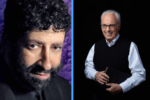The imagination is of all qualities in man the most godlike—that which associates him most closely with God. The first mention of man in the Bible is where he is spoken of as an “image” (Gen. 1:26): “Let Us make man in Our image, according to Our likeness.”
The only place where an image can be conceived is in the imagination. Thus man, the highest creation of God, was a creation of God’s imagination. The source and center of all man’s creative power—the power that lifts him above the level of brute creation and gives him dominion over all the fish of the sea, the birds of the air, and the animals that move and creep on the earth—is his power of making images, or the power of the imagination.
The imagination of man is but the window or door which, when thrown open, lets the divine life stream into our lives. When it is thus thrown open man is brought into a condition of consciousness which, for want of a better word, is called “inspiration.”
This heavenly inspiration is what links man to the divine and brings into existence our poets, composers, prophets, mystics, seers and saints. This is a power that Jesus Christ had and that lifted Him above all other men—a power that He, in His immeasurable compassion and infinite humility, wished to bestow upon others and share with them, that greater works than He had done they might do also.
These works—these mighty works, these miracles, if you will—are the direct outcome of Jesus’ converting everything He saw into parables. And a parable, we find, is merely “an allegorical relation of something real.”
Looked at from this angle, the performing of a miracle is not such an impossible task. It consists merely of looking at reality through the lens of the imagination and then letting this parable, or imaginative way of looking at reality, bring to pass what is spoken of as a miracle.
And what is reality? Reality, in the eyes of the practical man, is made up of cold, hard facts. And what are the cold, hard facts of life? As we look about us in this world what we see all too frequently is quarreling, bickering, unhappiness, unfaithfulness, treachery, covetousness and materialism.
These are facts of life. But what are facts? Fact comes from the word factum, meaning something we do or make. Are these facts of life identical with the realities of life?
Not according to Jesus. To Him reality does not consist of that which is made, but of that which eternally is. Love is—quarrels are made; joy is—unhappiness is made; truth is—lies are made; loyalty is—betrayals are made; purity is—impurity is made; life is—sickness is made.
So Jesus went through life seeing no quarrels, no unhappiness, no lies, no impurity, no sickness. Where they appeared to be, He turned the lens of His divinely inspired imagination upon them; He converted them into parables, and behold, they stood forth revealed as mere shadows or reflections—upside down—of the reality. And every time that Jesus converted a fact into reality the people exclaimed that a miracle had been wrought.
I do not mean to imply that Jesus went about disregarding and overlooking the facts of life. Rather He looked at them so much more steadily, so much more understandingly than the rest of mankind that He looked straight through them into the underlying reality of which they were the mere counterfeits or reflections. This is what the parabolic point of view consists of.
He looked steadily at the dead girl until He could utter with absolute conviction, based upon perfectly clear understanding, this startling parable: “‘The girl is not dead, but sleeping’” (Matt. 9:24). He looked through the palsied sufferer until He could pronounce with conviction another parable, “‘Your sins are forgiven you’’’ (v. 2).
For to Jesus a parable meant simply the going behind the fact to the reality the fact represents. It does not mean watering the leaf that is waving conspicuously in the sunshine but watering the roots that no one can see. It does not mean healing a man’s skin but healing his soul.
It does not mean dealing with the seen, but with the unseen; not with the carnal, but with the spiritual. Once perform the inner watering, the inner cleansing, and the outer healing will follow as a matter of course. “‘Which is easier, to say, “Your sins are forgiven you,” or to say, “Arise and walk”?’” (v. 5).
Now let me clear up a misunderstanding about the imagination that may have cropped up in the minds of many readers. Some have thought the imagination is something that makes believe that which is not. This is fancy, not imagination. Fancy converts what is real into pretense and sham; imagination enables one to see through the appearance of a thing to what it really is.
We may ask, Did Jesus perform a miracle when He said the leper was made whole? No, He merely demonstrated it. Did He break a natural law when He said, “ ‘The girl is not dead but sleeping’”? No, He merely demonstrated that life is the reality, and death is the shadow or counterfeit of Life.
Then can we create miracles? Yes, we can, if we use our imaginations and look steadfastly through the appearances of things to the reality behind them. We cannot create miracles by our fancy—by trying to make believe we see things that we do not and cannot see because they do not exist. We can create miracles by faith—by knowing the reality that exists behind the things that only seem to exist. Faith will indeed move mountains.
And what is the greatest of all realities, the reality around which all lesser realities revolve, as it were? The great reality, the realization of which was at the core of all Jesus’ miracles, was the truth that man is eternally united with all that is good—in other words, with God and His kingdom—and eternally separated from all that is bad. Merely to see this reality and see it clearly as Jesus did will make the sick whole, the sorrowful happy, the sinful redeemed and the lost found.
Glenn Clark (1882-1956) was the founder and director of Camps Farthest Out, a movement to help believers integrate body, mind and spirit in God. He was also the author of more than 50 books, including The Soul’s Sincere Desire.







Leave a Comment
You must be logged in to post a comment.